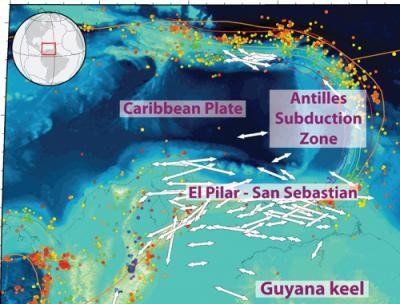Why Do The Caribbean Islands Form An Arc?

Scientists have recently solved a longstanding mystery of the sea: It turns out that the smaller Caribbean islands are arranged in a crescent shape because of great geological forces - the hot viscous rock that forms the Earth's mantle and a thick portion of the vast tectonic plate that contains the continent of South America.
In a paper published on Sunday in the journal Nature Geoscience, University of Southern California geophysicists Meghan Miller and Thorsten Becker describe how they modeled seismic interactions across the entire Earth in order to deduce the motion of plates as far down as 3,000 kilometers (1,864 miles).
"Studying the deep earth interior provides insights into how the Earth has evolved into its present form," Miller said in a statement Monday.
By looking at earthquake data, Miller and Becker were able to get a relatively clear picture of the interaction between the continental South American plate and the Caribbean Plate, which is mostly oceanic. Many islands - Puerto Rico, Haiti, the Dominican Republic and an arc of smaller islands including Martinique and St. Lucia - lie along the margin between the two plates.
Miller and Becker's analysis focuses on a part of the South American plate where the crust is approximately three times thicker than normal, an area known as a "cratonic keel," which can deflect and channel the flow of the viscous mantle. They ran 176 different computer models to test various predictions of how the keel influences the tectonic relationships between the plates.
"The keel acts as an anchor that decreases the overall surface velocity of South America," they wrote.
The interaction between the keel and the Antilles subduction zone - a place where the South American Plate is nudging under the Caribbean Plate - causes material to slide along, instead of destroying or generating new formations, Becker explained in a phone interview.
Based on their model, the arc of the Caribbean islands should become more curved and stretched out over the next few million years.
"If we're wrong, I'm not going to live to see it," Becker joked.
SOURCE: Miller et al. "Mantle flow deflected by interactions between subducted slabs and cratonic keels." Nature Geoscience published online 19 August 2012.
© Copyright IBTimes 2025. All rights reserved.





















